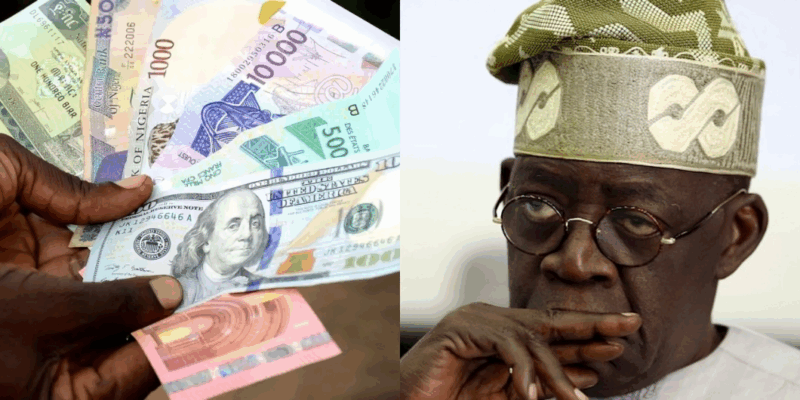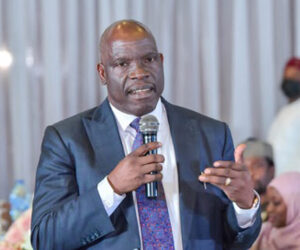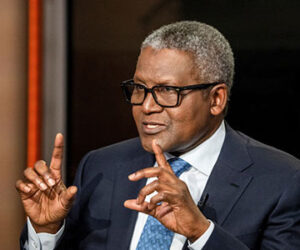According to the recent report, Naira joins the list of the 10 weakest currencies in Africa as of September 2025. The Nigerian currency ranks ninth on the list.
In August 2025, Nigeria’s inflation fell to 20.12% from 21.88% in July. Despite this slight improvement, the inflation figure remains high, primarily due to currency rate volatility and rising import costs.
The list below compares the purchasing power of one US dollar in each country. If a country needs a large sum of its local money to buy just one dollar, this means the country’s currency is weak.
According to the Forbes currency calculator, the following are the African countries with the weakest currencies as of September 2025.
Ojulari, formerly of Shell Nigeria Exploration and Renaissance Africa Energy, is credited with implementing reforms that boosted production and cut operational costs in his previous roles.
In a system often mired in inefficiency, Dr. Zacch Adedeji’s technocratic reforms are drawing rare commendation and resetting expectations for governance in Nigeria.
Tinubu emphasised that the Commission is now empowered to de-risk, fast-track, and ensure PPP transactions yield tangible results.
|
S/N |
Country |
Currency per USD |
Currency |
|
1 |
São Tomé & Príncipe |
22,282 |
São Tomé & Príncipe Dobra |
|
2 |
Sierra Leone |
20,970 |
Sierra Leonean Leone |
|
3 |
Guinea |
8,680 |
Guinean Franc |
|
4 |
Uganda |
3,503 |
Ugandan Shilling |
|
5 |
Burundi |
2,968 |
Burundian Franc |
|
6 |
DRC |
2,811 |
Congolese Franc |
|
7 |
Tanzania |
2,465 |
Tanzanian Shilling |
|
8 |
Malawi |
1,737 |
Malawian Kwacha |
|
9 |
Nigeria |
1,490 |
Nigerian Naira |
|
10 |
Rwanda |
1,448 |
Rwandan Franc |
Why does the Naira keep getting weak?
)
Year in, year out, the Naira continues to experience this recurring issue, and it seems as though there’s nothing that can be done to buck the trend.
The primary reason the Naira continues to depreciate is the fluctuating global oil prices. Nigeria largely depends on oil revenue for its foreign exchange. Therefore, when oil prices decrease, the amount of oil revenue drops, which impacts the Naira.
High inflation is another major factor. When the prices of goods continue to rise, the currency’s purchasing power decreases.. Thirdly, overdependence on importation. Most of the items consumed by Nigerians are imported, including food, medicine, and fuel. When the currency is weak, imports become expensive.
Is there any hope on the horizon?
Yes, there are signs that the Naira is stabilising slightly. Additionally, the federal government’s efforts, such as adjusting foreign-exchange rates and policies to boost local production, are helpful, but they are not enough.
For significant impact and improvement, Nigeria needs sustained economic reforms, reduced importation of non-essential items, and better inflation control.
Nigeria’s Naira, being the 9th weakest currency on Africa’s list, is more than just data; it reflects the daily reality of many Nigerians. Nigeria can’t afford to remain in this position for too long; it needs to move ahead.
To achieve this, the authorities must implement and execute innovative policies, promote increased local production, and maintain stable financial planning. Then, the Naira will strengthen.


![NNPCL Group Chief Executive Officer, Bayo Ojulari. [X, formerly Twitter/NNPCL]](https://image.api.sportal365.com/process/smp-images-production/pulse.ng/26062025/75faedd4-2776-4994-87c7-da02e7656435.jpg?operations=autocrop(340:210))
![President Bola Tinubu holds meeting with the FIRS chairman. [X, formerly Twitter]](https://image.api.sportal365.com/process/smp-images-production/pulse.ng/30062025/374fbab3-d78b-45af-8167-f7f156e8bcd5.jpg?operations=autocrop(340:210))
![President Bola Tinubu. [Facebook]](https://image.api.sportal365.com/process/smp-images-production/pulse.ng/19112024/6e447fa6-6092-4e60-bfbd-26a5a1165edb?operations=autocrop(340:210))
![10 African currencies stronger than the Naira [Premium Times Nigeria]](https://image.api.sportal365.com/process/smp-images-production/pulse.ng/21032025/481aa3e2-7327-4777-bd20-556830d8f9de.jpg?operations=autocrop(340:210))
)






